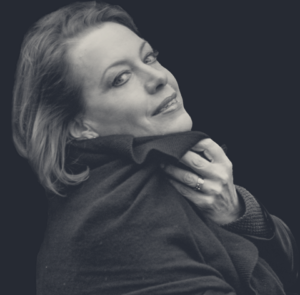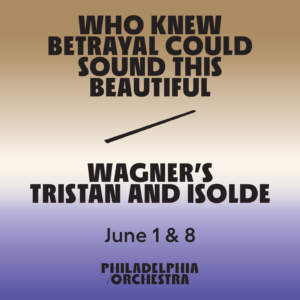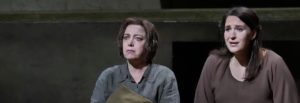
First, on October 10, came a revival of Onute Narbutaite’s opera Kornetas (“The Cornet”), at Lithuanian National Opera and Ballet Theatre in Vilnius.
Narbutaite, Lithuania’s most internationally recognized composer, premiered Kornetas in 2014 at LNOBT, having received commission from them. The following year, she went on to win Composer of the Year from the annual competition organized by the Lithuanian Composers’ Union, on the basis of this opera and the chamber work Was There a Butterfly? Subsequently, LNOBT revived the production twice in the next 2 seasons after the premiere.
Narbutaite’s music inhabits an individualistic landscape, marked by expressive musical language, defined structure, vast instrumentation and haunting melody. For me, her best piece to sample her oeuvre is the gorgeous and readily-available Tres Dei Matris Symphoniae recording on Naxos, conducted with authority by the same conductor as this show, Robertas Servenikas. (It’s also available on Spotify ).
Narbutaite wrote the libretto for Kornetas herself, based loosely on Rainer Maria Rilke‘s Die Weise von Liebe und Tod des Cornets Christoph Rilke (“The Lay of the Love and Death of Cornet Christoph Rilke”). In the program, she detailed her idea for the opera with the following explanation:
This opera is a free improvisation on the subject of Rainer Maria Rilke’s Die Weise von Liebe un Tod des Cornets Christoph Rilke. . . . Now, in the 21st century, this opera improvisation is speaking of the universality of that story, as if trying to state that human yearning – for love or transcendence – always remains the same. In the libretto one can find fragments from Rilke’s works of literature and letters, there are also bits from Die Weise von Liebe und Tod des Cornets Christoph Rilke. This reading of the Cornet’s story is further embellished by quotes takes from the writings of other authors, such as Homer, Johann Wolfgang Goethe, Charles Baudelaire, Oscar Milosz, Georg Trakl, Paul Celan, Jacques Prévert and Oskar Kokoschka. . . . R. M. Rilke’s poetic storyline is reflected in the opera, however, it serves more as a pretext, starting point and inspiration to a personal vision.
The ambitious undertaking mentioned above unfortunately became the case of “too much of a good thing”, in my opinion. Narbutaite gave each act a subtitle. Act 1, bearing the name “The Road” (with 11 scenes) in summary described Christopher Rilke traveling down the road of war, disturbed by his five dreams, how he met and separated with his friend Marquis and how he got appointed as the Cornet (Flagman).
Act 2, labeled “The Tower” and in 7 scenes, told the happenings in said tower, where Rilke met The Countess, made love to her and eventually died there.
As mentioned in the quote above, she cramped the operas with various other composers, particularly in the Act 1, made it almost twice as long as Act 2 and chock full of never-ending expositions. She even found the space to insert short passage of Beethoven’s Moonlight Sonata.
In the performance that I saw, they had to break for intermission after Scene 6 in Act 1, and I suspected that it wasn’t intentional. (Somebody came out to the stage to make an announcement.) In addition, those dreams in Act 1 weren’t interconnected, so the transition between Rilke’s real-world and dreamscape back and forth was pretty jarring and confusing. It didn’t help that the director also decided to stage those scenes disjointedly. For that reason, I found Act 2 was stronger, as I could see the narrative.
All those were very unfortunate, as there were a lot to admire from Narbutaite’s music. Her score had a dreamlike quality to it, not just in the instrumentation, but also in the vocal writing. She wrote extremely well for the boys choir, whose appearances with soprano Gunta Gelgote as Dream Maiden were truly the highlight of Act 1.
The requirement for this opera was also incredibly massive, not only the nine principals, but also five instrumentalists on stage, a dancer, a couple soloists in the pits, the chorus and boys’ chorus, and a large orchestra. Not to mention, it also needed a large number of supernumeraries.
I personally loved the trumpeter on stage, whose leifmotif-like melody reminisce of the trumpet opening of the Hymn part from Polish composer Andrzej Panufnik’s Sinfonia Sacra. In addition, the appearances of the pianist with her grand piano, always in the background crossing the stage, had a haunting, almost ominous, feel to it.
httpvh://youtu.be/0FlKNgJV49k
The singers, most of them veterans of the premiere four years ago, were uniformly excellent. By now (the third revival), they had become very comfortable with the challenging score, and it showed.
With his tall figure and bright tenor voice, Tomas Pavilionis truly embodied the young lonely soldier Rilke. As mentioned before, Gelgote stole the scene every time she appeared with the boys choir, although her transition to be the Screaming Girl, who died in Rilke’s arms in her underwear at the final scene of Act 1, would better have been portrayed by a different singer.
Interestingly, Narbutaite assigned Rilke’s friend Marquis and the Countess at the Tower to be sung by the same singer (my reasoning was both represented Rilke’s found and lost companions) and Jovita Vaskevicute took both roles confidently; her dark mezzo sounded masculine for Marquis, and brightened up sufficiently as the Countess, while looking glamorous in ball gown. Liudas Norvaisas made a brassy General/Knight/Old Man.
Servenikas conducted the orchestra with assured hands; nothing felt rushed or dragged. If anything, I admired the dreamy atmosphere that he shaped from the orchestra. I would love to hear him conducting other Baltic or even Nordic composers; he’s the real deal!
I have left the staging by Gintaras Varnas for last because it was my least favorite part of this performance; I felt that this opera needed a stronger hand to bring out the narrative coherently. I had to admit he had some interesting ideas, particularly the last dream (“The Forgotten City”), where the singers strikingly perched in gilded cages, and in the party scene in Act 2. However, those moments were few and far between, buried between muddled scenes darkly lit.
In conclusion, this was an opera that I admired more than I loved. I was glad to make the trip to see this, to experience an opera by Lithuanian greatest living composer! On a final note, if you happen to be in Vilnius, the LNOBT is a must; it is very affordable, beautiful on the inside (check out the chandeliers!), great orchestra and conductor, and it has English supertitles!
The second Baltic opera that I experienced on this trip was the opening night (on 10/11) of another revival, this time Estonian Rasmus Puur’s first opera Pilvede värvid (“The Colours of Clouds”), at Estonian National Opera (Rahvusooper Estonia) in Tallinn.
The 27 year old Puur, who graduated from Estonian Academy of Music and Theatre in 2014, is no stranger to Estonian music scene. He founded a youth orchestra Reaalmažoor with Edmar Tuul in 2007 and 10 years later, he was the assistant conductor for the 2017 Youth Song and Dance Festival and he wrote the anthem “Here I’ll Stay” for it. He is also an acclaimed arranger and orchestrator, and he conducted Kasar’s opera Katuselt and the musical Shrekthere.
Pilvede värvid was based on Jaan Kruusvall’s 1983 play of the same name. I wasn’t familiar with the play, but what intrigued me to this opera was the theme; the website and the program repeatedly mentioned that this is about the fleeing of Estonians from their home country in the whirlwind of the events of World War II.
The company’s website noted“The opera inquires whom the independence of Estonia was restored for if everyone now desires to move abroad. Why do caring and unity vanish so quickly to be replaced by the “everyone for themselves” principle?”
Personally, I felt that the heart of the story stayed closely on a family drama, torn by the changes surrounding them. I loved that Puur and librettist Laur Lomper never lost sight of that fact, amidst the chaos and turns of times.
In short, the family consisted of father Kaarel, mother Ell, son Kalev and daughter Lagle. Kalev married foreigner (Russian) Maria. When the curtain opened in Act 1, they were in second half of the 80’s during Gorbachev’s reign. Lagle was a freedom fighter, and Kalev worked in the government. Eventually, Kalev left the party and worked at his parents’ farm. Lagle met Maks, fellow activist, and became pregnant. Autumn came, and Maks left Lagle. She decided to move to Sweden to raise her son Mihkel (Maik).
Act 2 saw Kalev got bored with farm work and started doing metal trade in Moscow. Independence was successfully declared in Estonia. Kalev got scammed by his business partners and pawned his parents’ farm. During the Youth Song Celebration, Lagle brought Maik home, but the boy couldn’t even speak Estonian. They went back to Sweden for good. Kalev was forced to flee to Moscow, taking Maria with him. Kaarel and Ell got kicked out of their farm. They were afraid that they would die alone but Maria returned to stay, ending the opera on an up note.
This was truly a powerful opera. Puur’s musical landscape is late Romantic, and his handling of melodies reminded me a lot of Swedish composer Kurt Atterberg (whose own opera Aladinwas rescued from oblivion in Braunschweig last year), crossed with Claude-Michel Schönberg’s Les Misérables, in terms of his propensity for big sweeping grand (almost bombastic) gestures.
That big melody treatment was particularly evident in Act 1, during expositions. For example, when Lagle was singing about being free, she was swinging across the stage suspended by cables as if she was “Defying Gravity.” Similarly, Einrih’s speech high above the tower brought to mind Enjolras at the Barricade. My companion for this opera even quipped “This is not opera, this is Broadway musical!”
All that wasn’t an effort to belittle the opera (I love both Atterberg and Les Miz). If anything, this was to show how approachable the opera was, an opera for the masses. I particularly loved Maria’s lament as a foreigner. As an immigrant myself, it really shook me to the core. Another beautiful moment in Act 1 was at the end, where, after the family argument escalated, the grandmother, who had been silent up till that moment, simply opened her mouth and gently offered wise advice.
Act 2 found Puur’s music to be more serious, harrowing throughout, considering all the confrontations and heartbreaks embedded in the plot. The highlight of this Act was definitely the Youth Song Festival, where the boys choir sang a cappella; it was as if the time stopped and the angels in heaven sang!
I guess Puur used his own experience leading the massive children choir to lavishly craft that scene. Just when I thought this opera would end tragically, the final scene came transcendentally, to restore faith in human beings.
httpvh://youtu.be/fqwoUCua18I
The staging for this production was simple, almost minimalistic. A tower, which would slowly disintegrate throughout the opera, was placed on a turntable with two carousel horses (also fell apart later). A table and chairs were simply put on that turntable for family scenes, and a car at the back for beginning of Act 2.
I found the choice for the set (by Ervin Ounapuu) and Roman Baskin’s direction to be very intriguing, refreshing even. It gave the opera a “breathing space”, in my opinion. On a sad note, Baskin passed away about a month before this performance, and the show started with a moment of silence in honor of his memory.
The singing and acting were collectively excellent. Rauno Elp, as Kaarel the father who underwent a lot of emotional turmoil, embodied the role admirably and with dignity. It was easy to relate to his characterization. As his wife Ell, Triin Ella also acted well, although I felt at times she was swallowed by the orchestra.
With her punk-rock getup and hyper movements, it took me a while to get used to Janne Sevtsenko’s Lagle, but she eventually mellowed out (especially after the son came into picture). Tenor Mati Turi’s Kalev was sufficiently boastful and cocky, although he looked like he was about the same age as his dad. I loved mezzo Juuli Lill-Köster as Maria, the saving grace of the opera.
I like the no holds barred approach of the conductor Lauri Sirp; climaxes were as thick as a wall, and low points were truly hushed. I think the singers responded well to it, with the exception of Ella. I detected some amplifications added in the performance, but it wasn’t intrusive.
All in all, this was a very solid first opera for Puur, and I am looking forward to hearing more from him in the future. I’m not Estonian, but even I could really feel the power of the message in this opera. Needless to say, my fellow audience sobbed at various places around the opera, and in the end, they cheered thunderously.






Comments